Misunderstood Marvels: The North American Copperhead
I have a particular passion for snakes. They are some of the most amazing, beautiful and beneficial species in the animal kingdom, yet they are widely feared and despised. Millions of these animals are killed each year, simply because people do not like them or do not understand them. One of the most notorious species is the copperhead of North America.
The Copperhead (Agkistrodon contortrix) is a venomous species that is a member of the pit viper family. They are short, stout snakes and are typically much less active than the sleeker non-venomous species. Rather than actively hunting their prey, copperheads are ambush predators that will sit motionless for days or even weeks on end, waiting for prey to come just within reach. Their dark brown coloring allows them to blend in with the leaves of the forest floor, making them almost completely invisible to prey or passing predators. Hatchling copperheads have a bright yellow tail that they may wiggle to lure in unwary prey. Like all pit vipers, copperheads have a pair of heat pits, small holes located just between their eyes and nostrils. These pits allow the snake to register prey's body heat, allowing them to hunt even in complete darkness with a form of thermal imaging.
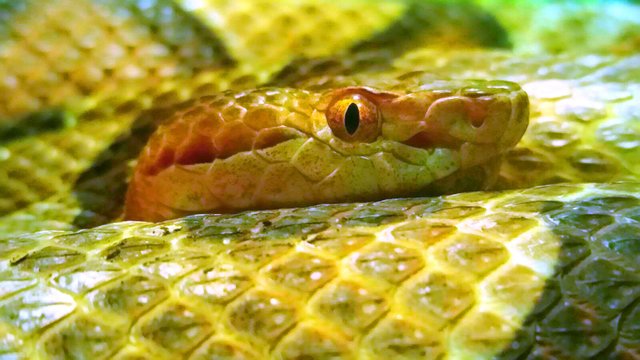
The very mention of the word "copperhead" conjures up the image of a deadly snake, whose bite is sure to cause certain death. In actuality, despite being venomous, copperheads pose very little threat to humans. Their venom is far less potent than that of most snake species, and our immune system is generally able to combat the venom (people admitted to hospitals with a copperhead bite are typically given only painkillers to block the worst of the pain while the body heals on it's own). Despite many urban legends of deadly copperheads, fatalities resulting from copperheads are extremely rare (typically on due to an allergic reaction). They are also very solitary animals, will go out of their way to avoid human activity whenever possible. Most encounters are accidental, and even when confronted by humans, copperheads are reluctant to bite. Venom requires a lot of energy for the snake to produce, and since they need that venom to immobilize prey, it is disadvantageous for the snake to use the venom to defend itself, and will generally only be used as a last resort. Most copperhead bites occur when people attempt to capture or kill them (if you approach ANY wild animal, you run a similar risk of being bitten); copperheads are non-aggressive snakes that only bite in defense.
Many people believe the copperhead is deadly simply because of confusion surrounding the name. While the copperhead of North America is quite docile and non-potent, the copperhead native to Australia (Austrelaps, more closely related to cobras and their kin) can easily kill a healthy adult, leading many people to assume our native species is just as deadly.
Copperheads may not be everyone’s idea of a good neighbor but they are very beneficial animals if left alone. They feed primarily on rodents such as mice and rats, and generally when they are found nearby our homes, it is simply because they are hunting the rodents that live close to us. A single snake can do wonders for a mouse infestation, without having to put down traps or poison. Despite their beneficial nature, many people do not feel comfortable with a venomous snake around their home due to children or pets. If a copperhead (or any venomous snake) is found in your yard, it is recommended that you call wildlife services to take care of the animal, thereby keeping you and the snake safe.
Remember, in many states it is ILLEGAL to kill any snake unless it represents and IMMEDIATE threat.
-----------------------------------------------------------------------------------------------------------------------------------
This post borrowed heavily from a similar blog post I wrote for the facility I work for (http://thevlm.org/herp-highlight-4-northern-copperhead/)
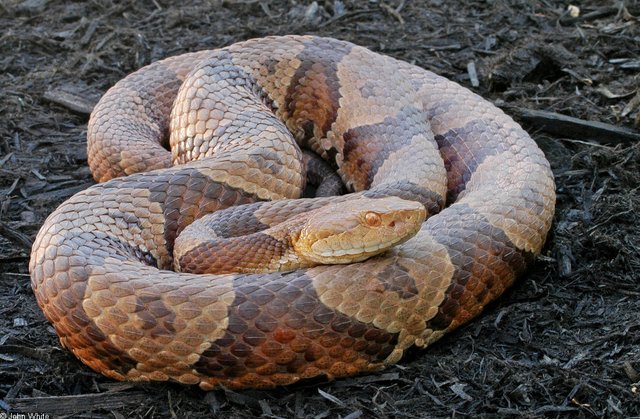
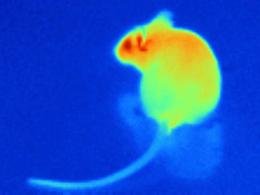

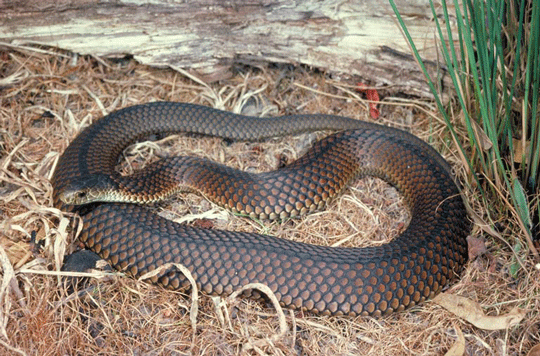
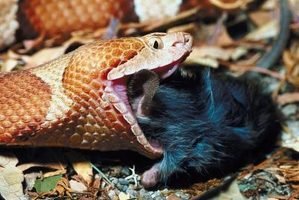
Here's a question I've wondered about for years after seeing a black racer vibrate the tip of its tail in dry fallen autumn leaves as it fled. Which came first in the rattlesnake, the behavior or the structure? Evolutionarily, I mean. Clearly snakes without rattles can make that repetitive motion. Did the rattle structure evolve simply as a way of amplifying the sound?
I would say the behavior did. Lots of species of snakes (venomous and non-venomous) will vibrate their tail when agitated, and some can create a buzzing sound fairly reminiscent of the rattlesnake. The rattle probably evolved over time as a means of amplifying that sound. Interestingly, today more and more rattlesnakes are losing their rattles; the rattlesnake roundups capture snakes by listening for the tell-tale sound. The snakes that are left behind or over looked are those with either a reduced rattle or none at all. So thanks to the actions of humans, we may see a shift in the species as these rattle-less snakes pass on their traits.
Like the tusk-less elephants in heavily poached areas of Africa.
https://www.awf.org/blog/going-tuskless
Thanks.
Really nice post. I did not know that the Australian copperhead and the NA copperhead were different. I've been reading through your posts and learning quite a bit! Please keep this up!
Glad it's informative! Thanks for the support!
Cool information, and thanks for helping educate about our animal friends :)
Really cool about the thermal imaging. I guess that's how they know it's prey rather than a large animal. It's not just that they know "something" is nearby, they can actually create an outline of it?
I accidentally came close to a rattlesnake twice this summer, and both times they warned me HISSZSZSSZSS. Much respect for them.
Nice one @herpetologyguy!
Snakes are beautiful creatures. In Moscow parks I see grass snakes are getting sun. Strange, but many people scream seeing them.